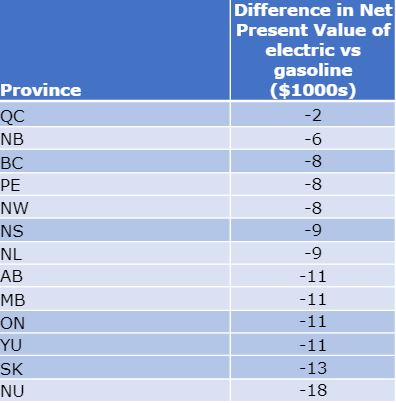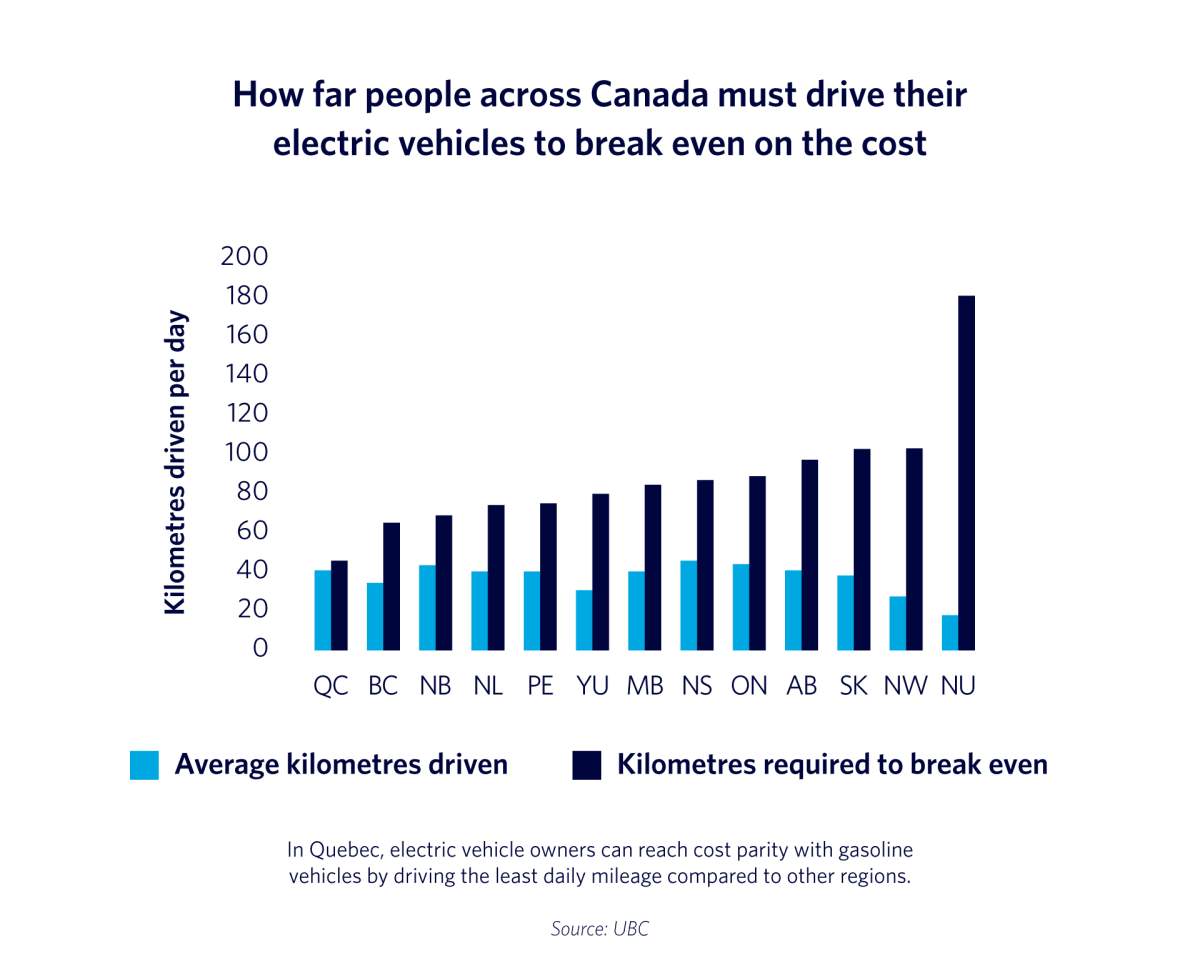Can you actually save money by buying an electric vehicle?

The answer, according to a new University of British Columbia study, depends on how much you drive it and what province you are in.
“It actually turns out that the total cost of owning an electric vehicle can actually vary quite a bit across Canada depending on where you live and also how you live,” explained Bassam Javed, a UBC PhD candidate and study co-author.
The paper, published recently in the journal Environmental Research Infrastructure and Sustainability, looked at the total cost of owning an EV and a traditional gas-powered vehicle over seven years, the average period Canadians tend to own a vehicle.

Researchers factored in price, provincial subsidies, maintenance costs, gasoline costs, electricity costs, charging stations, resale value and how far Canadians drive on average every day.
Buying an electric vehicle off the lot is more expensive, but every kilometre driven in one is cheaper, Bassam explained. As a result, reaching the “break-even” point at which it becomes cheaper than a gas car requires either racking up mileage or owning it longer than average, he said.
To illustrate, Bassam made an “apples-to-apples” comparison between two of the same model car: a Hyundai Kona EV versus a Kona gasoline edition.
In B.C. the Kona EV owner would need to drive 64 kilometres a day over seven years to break even. But British Columbians only drive an average of 34 kilometres a day, meaning their cost of owning the same EV would be about $8,000 more than a gas version, Bassam explained.

Get daily National news
The study found Canadians who logged the average mileage per day would not break even on EV ownership in every province and territory, over a seven-year lifespan.
Quebec came the closest to break-even for a typical daily driver, due largely to cheap electricity and generous provincial EV subsidies, with an owner spending about $2,400 more. Alternatively, a Quebec owner would need to drive 46 kilometres a day to hit the break-even point — about 18 per cent farther than the average driver does.
Residents of Nunavut face the most daunting costs of EV ownership, laying out an estimated $18,000 over the lifespan of a vehicle — or needing to drive a whopping 181 kilometres per day to break even.
In both Alberta and Ontario, owning an EV would cost $11,000 over a seven-year lifespan, or require a daily drive of 96 kilometres in the western province, or 88 kilometres in the eastern province, the study found.

The money math, however, improves for people who keep a vehicle longer than average and for those who spend more time behind the wheel.
“If I am someone who is going to hang on to my vehicle for 10 years, and I am driving well over that 65-kilometre threshold, I could actually be saving quite a bit of money fairly soon,” he said.
“Those types of people can generate savings fairly quickly, just because of the sheer number of kilometres they are driving.”
Alternatively, the study found, EV owners can save significantly by choosing a smaller class of vehicle or avoiding luxury options — thus generating savings sooner.
- WestJet will reverse cramped seat configuration after widespread backlash
- Flair Airlines reroutes strategy to lure corporate travellers — without a business class
- Will more Chinese EVs be a ‘self-inflicted wound’ for Canada’s auto sector?
- Canadian canola farmers express ‘cautious optimism’ over trade agreement with China
Bassam gave the example of a gas-powered compact SUV versus a smaller EV that both carry the same $500-$700 monthly payment.
“Over seven years I end up saving potentially tens of thousands of dollars, simply because EVs, right off the lot, start to generate savings for you,” he said.
One factor the study did not look at was insurance, which may also enter into a would-be EV driver’s calculation.
A recent study by credit rating agency Morningstar DBRS found that EV owners may start to see their insurance rates rise in the coming years, as the vehicles become more popular.
It’s a factor that may become relevant sooner than later, with federal legislation mandating that all new cars sold in Canada be emissions-free by 2035.









Comments